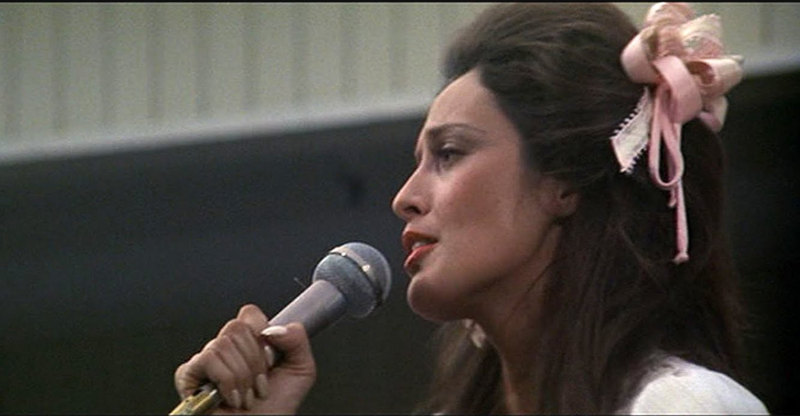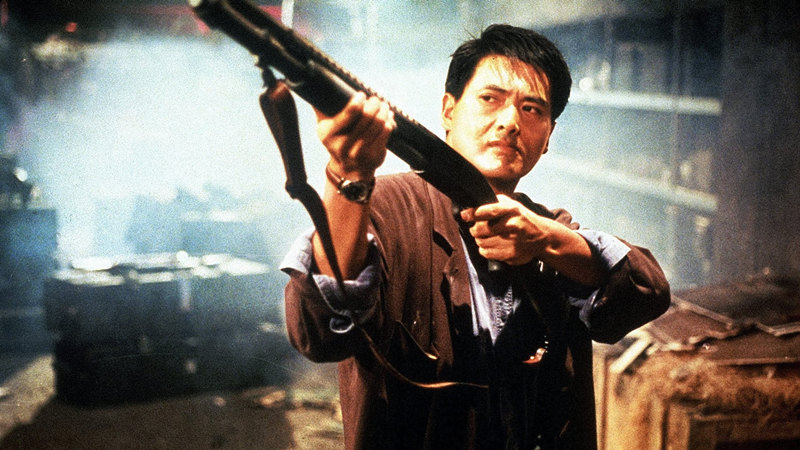George Bailey and Bedford Falls never looked so good! This two-disc collector’s set features a brand-new colorized version of one of the most beloved holiday films, “It’s a Wonderful Life,” while the other single-sided disc contains a restored black-and-white version. And I mean noticeablyrestored.
Compare it to the Silver Screen Classics edition and there’s no comparison. You don’t even have to make it past the title cards to notice a huge difference. On the old print there are all sorts of flickering and dancing imperfections–dirt and scratches that jump all over the frame. It’s like watching a candle. But with this new restored version, every frame has a pristine look, with no scratches and dirt flecks to mess things up. The whole film has been painstakingly cleaned up, and it looks great. And I thought the Silver Screen edition looked great, so you can imagine what a superb upgrade this is.
The problem for collectors is that the Silver Screen Classics edition offered an “uncut” 132-minute film, while this one is 130 minutes–the original theatrical run-time.
Personally, I think it’s a no-brainer upgrade, because I couldn’t tell you what those two minutes contained. But the movie looks SO good it’s unbelievable. And the colorized version? This isn’t the old computer-generated one that looked like a diorama in motion and made everyone want to charge Ted Turner with pitchforks for even having the audacity to suggest that old films should be colorized.
The colors added to this 1946 film look absolutely natural, as if it were always in color. And color spreads a nice blanket of warmth over this holiday classic, so that it feels cozier than ever. With color, you also notice details in the film that may have been lost in black and white–like a skull that the miserly Mr. Potter (Lionel Barrymore) keeps on his desk, or the antics of the various strange pets that Uncle Billy (Thomas Mitchell) keeps at the Building & Loan.
In the past, I’ve been one of those black-and-white purists who were opposed to colorizing movies under any circumstance. But this new full-color “It’s a Wonderful Life” has made a believer out of me. It looks that good.
Not every film shot in black-and-white was a director’s choice based on aesthetics, I’m reminded. Sometimes black-and-white was simply a budgetary decision, and with a film like this–set during the colorful Christmas season and sprinkled as liberally with small-town Americana as it is Hollywood snowflakes–I can’t imagine a valid artistic reason for choosing black and white over color.
Though producer-director Frank Capra never intended it as a Christmas film, “It’s a Wonderful Life” has become a seasonal favorite mostly because its big scene at the end occurs on Christmas Eve, and, of course, because it’s a film about giving rather than receiving. And is it coincidence that Bedford Falls’ richest and most surly resident has the same attitude about people and money as that other Christmas curmudgeon, Ebenezer Scrooge?
But holiday tradition is only one reason this engaging film has endured. It’s also become a generational favorite because it successfully combines two time-honored Hollywood plots: rags-to-riches, and romance. George Bailey (James Stewart) facilitates the American dream of home ownership for his neighbors via a family-operated building and loan, going up against big-time developer Potter (Lionel Barrymore) and always putting friends and family first. He misses out on his dream European travel, misses out on a college education, and misses the chance to leave Bedford Falls to make his mark in the bigger world, all because of his devotion and altruism. He’s the quintessential nice guy whom want to win. Same with Mary (Donna Reed), who’s had a crush on George since she was a little girl. You cheer her on too, hoping she’ll snag that dream of hers. And for comic relief, to carry the film’s message there’s Clarence (Henry Travers), a dimwitted angel who hasn’t yet earned his wings.
When the film first played in postwar theaters, critics blasted it for the sentimentality that characterizes a Capra film, and it lost $525,000 at the box office. But the movie has grown more beloved over the years, partly because it reaffirms the values of a WWII generation–patriotism, hard work, and sacrifice–while ushering in the values of the Baby Boomer/Eisenhower years (including, among other things, the notion that part of the American dream lies in family, home ownership, 2.3 children, and not just tolerable, but wonderfulneighbors).
If you told me I’d love a film about an angel who tries to win his wings by showing a suicidal mortal that it really is a wonderful life–that one person really makes a difference, and that “no man is a failure who has friends–I’d have scoffed. More Capra-corn. But you know what? It works.
Video:
“It’s a Wonderful Life” is presented in 1.33:1 aspect ratio. The black-and-white version looks stunningly superior to previous releases. It’s cleaner and crisper, with better contrast and detail. The color version is just as sharp. You really notice it when the camera pulls in for a tight close-up on Stewart, or when you see a herringbone jacket. On the old version there’d be a little “noise” around those designs, with a little pulsing. But everything is clear and sharp here.
Audio:
The audio was never a feature, and it’s not here either. Options are English or French Dolby Digital Mono, with English (CC) subtitles. You’re not going to get the same sort of resonance or full-bodied sound as you do with today’s stereo soundtracks, but I will say that it’s as free of distortion as the video.
Extras:
Included here are the same bonus features from the Silver Screen Classics edition: “The Making of ‘It’s A Wonderful Life’,” narrated by Tom Bosley and featuring interviews with Capra and Stewart, and a special tribute to Frank Capra narrated by his son, Frank Capra, Jr. Although both Bosley and Capra, Jr. are wooden as narrators, the features are entertaining enough and packed with sufficient insights to actually enhance our appreciation of the film. We’re told, for example, that in the early days of Hollywood, snow was nothing more than painted corn flakes, but the “crunch” killed any sound possibilities. For this snow-filled movie, new techniques were invented, which earned an Academy Award nomination. At the time the Bedford Falls set was the longest Main Street constructed in Hollywood, and footage of bricklayers working to build it reinforces the care and attention to detail that went into the film. When we hear Bosley tell how Jean Arthur was a first-choice to play the female lead, or that Vincent Price was considered for the role of the miserly, wheelchair-bound Mr. Potter, we become so wrapped up in behind-the-scenes trivia that we forgive him for his awful stand-by-the-fireplace-near-a-Christmas-tree posturing.
Also included is the original theatrical trailer. I only wish there were a feature on the colorizing process.
It’s worth mentioning that this is a two-disc set with single-sided discs, whereas the Silver Screen Classics edition was a double-sided disc. That’s another reason for upgrading, as far as I’m concerned.
But the big reason is the color. Actor Jimmy Hawkins, who played Tommy, told DVD Town in an interview that the people who colorized the film really did their homework. They took the trouble to learn what the actors were wearing.
Bottom Line:
My wife and Frank Capra have something in common: “It’s a Wonderful Life” is their favorite film. It’s certainly one of mine. When we finished watching the color version, we agreed that we might watch it in color exclusively from now on. Why? Because we’d like this film to become one of our family’s holiday traditions, and for the first time, it really held the attention of our two children. Whether we like it or not, color makes that big of a difference for today’s young people, and it might be the thing that ensures that this film will remain a popular annual tradition for future generations.
Paramount finally got it right. Whether you prefer it in black-and-white or color, this edition of “It’s a Wonderful Life” looks better than ever.


